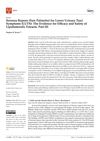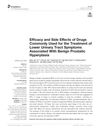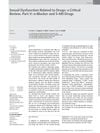Benign Prostatic Hyperplasia And Male Lower Urinary Symptoms: A Guide For Family Physicians
June 2017
in “
Asian journal of urology
”
TLDR Family doctors can manage older men with urinary symptoms using exams, tests, and medications.
The document provided a guide for family physicians on managing male patients with benign prostatic hyperplasia (BPH) and lower urinary tract symptoms (LUTS). It emphasized thorough history taking, physical examination, and targeted tests to determine which patients could be managed in the community versus those needing referral to a urologist. Key management strategies included the use of α blockers, 5-α reductase inhibitors, and antibiotics, with specific criteria for their application. The guide also highlighted the importance of recognizing red flags for referral, such as persistent symptoms, gross haematuria, and elevated PSA levels, aiming to enable effective community management of BPH/LUTS, reduce unnecessary referrals, and ensure cost-effectiveness.



